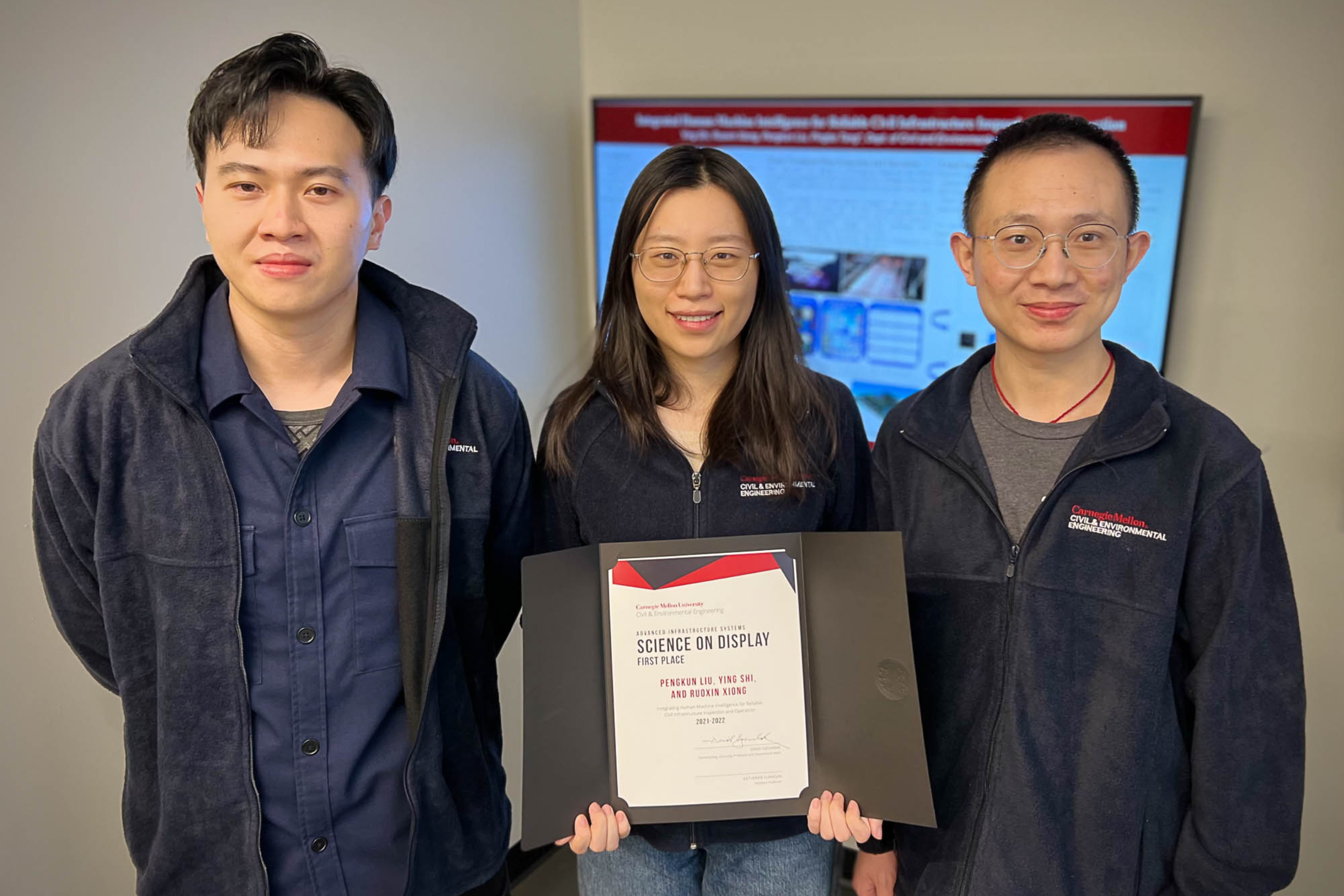
Real-world Engineering Solutions Exhibited in New Autonomous Infrastructure Systems Lab
The new Autonomous Infrastructure Systems Lab in Porter Hall is ready to give visitors a look into real time experiments, research, results, and data collection.
“The projects in the Autonomous Infrastructure Systems Lab area gives students a clear understanding of how the theoretical and fundamental knowledge they are learning interfaces with, and enables, real-world engineering solutions,” says Professor Katherine Flanigan. She adds that it highlights the importance of the interdisciplinary skills students are being asked to develop.
To kick off the opening of the space, Flanigan challenged her students to create proposals describing how they’d use the lab’s space and monitors.
The new space not only challenges students and showcases their research—it also shows visitors how CEE is at the forefront of changing the industry landscape.
At the end of the day, we want people to be able to derive benefit from the projects displayed in this space, regardless of their background or existing knowledge.
“Stakeholders will be able to better understand the research being conducted in our department, and the impacts of this research, by being able to directly interact with it,” says Flanigan. “At the end of the day, we want people to be able to derive benefit from the projects displayed in this space, regardless of their background or existing knowledge.”
The student team of Pengkun Liu, Ruoxin Xiong, and Ying Shi submitted the winning proposal, “Integrating Human-Machine Intelligence for Reliable Civil Infrastructure Inspection and Operation.”
Their proposed project demonstrates integrating human-machine intelligence for reliable civil infrastructure inspection and operation using bridge inspection, water treatment plant inspection and operation, and canal inspection.
Liu, Xiong, and Shi gained access to the new space and are gathering the equipment they need for their display so visitors can “expand their understanding of human-machine intelligence integration while gaining insight into deep learning, remote sensing, and domain knowledge for civil infrastructure inspection and operation.”
Their finished exhibit will utilize multiple media formats including prepared slides, images, videos, point clouds, and BIM models to demonstrate research results. Visitors will be able to interact with the project by wearing virtual eyeglasses that track eye movements, simulating the process of identifying different bridge defects.
In addition to the first place competition winners, Qiling Zou won 2nd place and Bin Gui won 3rd place.